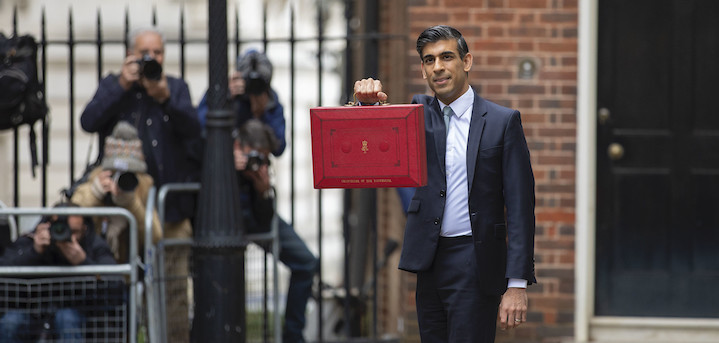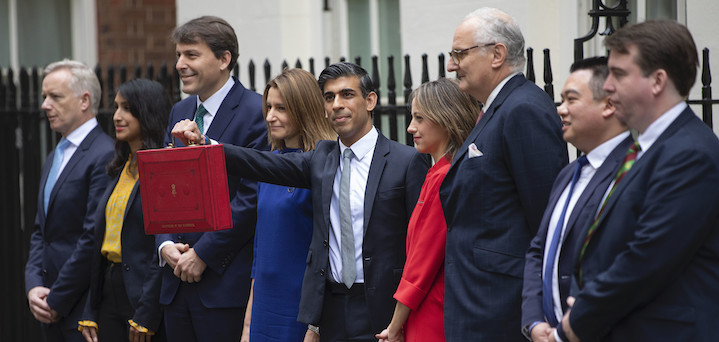
Room151 experts offer their response to the spending review.
Kate Ogden
This spending review is relatively generous, and much more generous than suggested by the plans the chancellor published even last month.
The massive £40bn tax rises announced earlier in the year, and an improved economic outlook, have allowed for real and substantial increases in day-to-day spending.
Relieved
Local government has been promised a headline 3.0% average real-terms increase in core spending power each year. That includes £3.6bn to fund social care reforms—the increase for councils’ existing responsibilities will be 1.8% a year on average.
Councils, which were bracing for a real-terms cut in grants next year, will still be relieved. Instead they can expect a £1.6bn increase in grants next year, followed by a 2-year freeze.
Front-loading in this way seems sensible, given any pandemic pressures are also likely to be front-loaded. But it will mean relying increasingly on local taxes to meet spending pressures by 2024-25, and make it harder to ensure funding for deprived areas—which can raise less from council tax—keeps up with the rest.
Cut backs
Council tax bills are expected to rise by much less than in recent years—by 2%, plus 1% for social care. Combined with higher forecast inflation, this means average bills will stay roughly flat in real-terms over the next three years, a departure from seven years of above-inflation rises.
Those referendum limits—and crucially, how funding will be allocated between councils—won’t be confirmed until the settlement later this year.
Whether planned funding increases are enough to keep pace with rising demands over the medium-term remains to be seen, and will depend on how inflation affects councils’ costs, and whether we see a strong rebound in business rates. I’d hazard it’s likely councils may need to cut back some services without more funding to meet rising costs and demands elsewhere.
Kate Ogden is a research economist at the Institute for Fiscal Studies.
29th November, 2021
London Stock Exchange
6th Annual FDs’ Summit
Lead sponsor PFM/UKMBA
Public sector finance directors can register here
David Blake
Perhaps the most dynamic aspect of the budget from a treasury management perspective was the announcement that planned gilts sales are expected to be almost £60bn lower than previously forecast.
The reduced supply sent gilt prices rocketing and saw yields falling, long-dated PWLB yields fell by 0.15% the following day.
We had plenty of content on price pressures and inflation but that’s already baked in the cake as far as the gilt markets go; however the news on reduced gilt sales, a result of a revised forecasts for a stronger economic rebound, was a real surprise for markets.
Elsewhere, HM treasury did provide some much needed support for local authorities, £1.6bn of new grant funding in each of the next three years, a housing settlement that includes £300m of locally led grant funding, plus funds for cyber resilience and household support.
While plenty of individual authorities were name checked throughout the speech you won’t need to speak to many of those to find out the funding announced won’t go very far, budgets will be stretched wafer thin for the foreseeable future.
David Blake is a director at Arlingclose.
Room151’s Audit Committee Masterclass
3 & 10 December, 2021
with Richard Harbord
Explore best practice and supporting the work of officers
REGISTER HERE.
Dan Bates
The general consensus from local government commentators was that the spending review was better than expected but not enough to address the funding gap created by previous cuts and demand pressures.
Frustratingly, we will have to wait until the provisional settlement in December for most of the specifics but there is enough information to make an informed guess of what the picture will look like, so here goes.
Certainty
First, the setting of allocations for three years, coupled with kicking the fair funding review further down the road, provides an opportunity to set a three-year settlement. For me, having certainty in the medium term is just as important as the allocations themselves.
That certainty extends to New Homes Bonus and business rates growth reset which, for many authorities, makes up a significant proportion of funding.
No announcement on New Homes Bonus might indicate that it will be phased out or retained at a more modest level with one year’s reward.
No direct announcement was made on the business rates reset but other business rates decisions means that a reset is looking increasingly unlikely in 2022-23 and perhaps beyond. This, if confirmed, will be really good news for those that have accumulated significant growth over the last few years
Front loading
As for the £4.8bn announced over three years, this will be front loaded providing £1.6bn in 2022-23 followed by two cash flat settlements for 2023-24 and 2024-25, but a real terms increase of 3.7% over the three years.
It remains to be seen whether Michael Gove uses this to give all authorities an equal boost of SFA or top slices to provide additional funding to priority areas such as social care. There is also a question as to whether other pressures such as the increase in employers’ national insurance will be met from within this increase.
One final observation: Much continues to be made about ‘levelling up’. However, no fair funding review and a frozen settlement model will further widen the spending power gap to the detriment of those high needs, low taxbase areas most in need of ‘levelling up’.
For authorities serving these areas, a fair funding review re-introducing equalisation that comes with an annual adjustment for needs and resources seems more distant than ever.
Dan Bates is the finance specialist at Local Government Improve. He has particular interests in fair funding, local government financial resilience and capital health.
Twitter: @danbates_LGi
Richard Harbord
There are a number of things which are of great significance in the chancellor’s Statement.
Firstly, the things he didn’t say, in particular adult social care and the fact that there was no increase in resources for Public Health.
There appears to be a belief that steps taken so far will resolve the adult social problem.
For that to become even partially true for local authorities means an increase in council tax which, in a lot of authorities, really isn’t an acceptable strategy.
For the quite exceptional extra demands made on local public health services it seems incredible not to give some increased funding.
Secondly, the Office for Budget Responsibility (OBR) report suggests that inflation will be at 4.4% next year and may hit 5%.
The difficulty here is that it is a well known fact that local authority inflation is in excess of CPI (Consumer Price Index).
For children and adult social care the cost of placements presents a significant financial risk. Last week’s report from the Competition and Markets Authority (CMA) clearly points that out.
Thirdly, as always with three-year plans, until the detail is published you don’t quite know when things are going to happen. We desperately need a three-year settlement this year to rescue medium-term planning.
Topping it all, there is a worry that the quantum on business rates is going to fall and that funding deficit will need to be made up somewhere else.
Richard Harbord is former chief executive at Boston Borough Council.
—————
FREE monthly newsletters
Subscribe to Room151 Newsletters
Room151 Linkedin Community
Join here
Monthly Online Treasury Briefing
Sign up here with a .gov.uk email address
Room151 Webinars
Visit the Room151 channel















